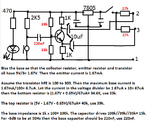Audioguru
Advanced Member level 7
- Joined
- Jan 19, 2008
- Messages
- 9,455
- Helped
- 2,151
- Reputation
- 4,302
- Reaction score
- 2,008
- Trophy points
- 1,393
- Location
- Toronto area of Canada
- Activity points
- 59,701
One ECM-500 mic is a gooseneck electret cardioid type with a 600 ohm output produced by its Jfet that is powered from a 1.5V AA battery cell. Another mic is a "phantom" powered condenser type.
The cardioid pattern is directional so it should reduce feedback unless it is pointing towards a speaker at one side.
The cardioid pattern is directional so it should reduce feedback unless it is pointing towards a speaker at one side.


